In the rich tapestry of Hindu mythology, Lord Ganesha stands as an adored deity, venerated not only during Ganesh Chaturthi but also before every puja or ritual. The stories that surround Lord Ganesha’s origin and significance are captivating, offering profound spiritual insights. What sets Lord Ganesha apart is the revelation of 8 Avatars Of Lord Ganesha, or Lord Ganesha’s eight avatars, each carrying a unique message for humanity. In this comprehensive exploration, we dive deep into the enchanting narratives that capture the essence of these avatars.
8 Avatars Of Lord Ganesha Are:
Vakratunda: The Curved-Trunk Savior
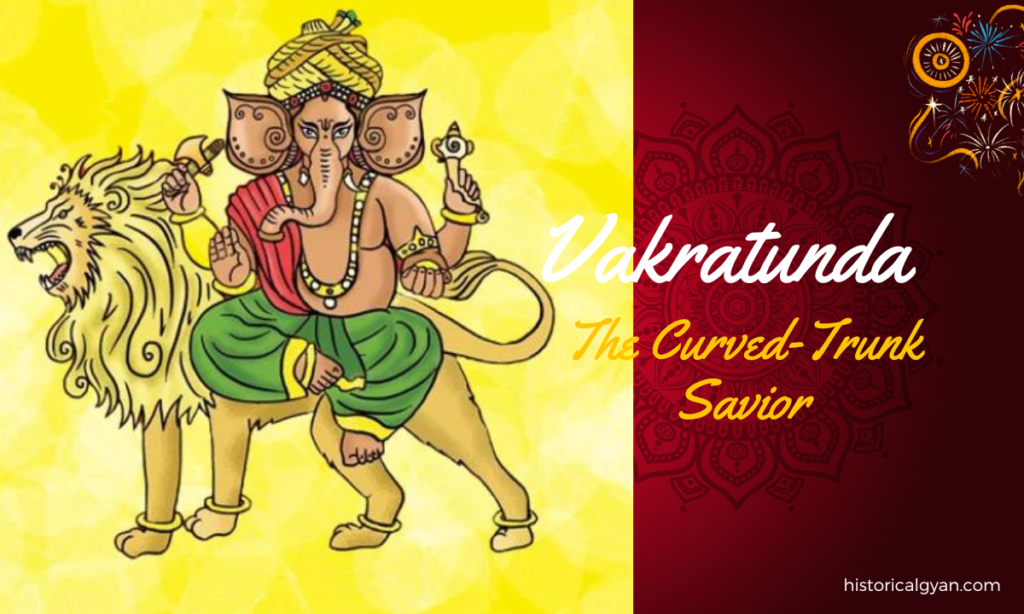
The first avatar of Lord Ganesha, Vakratunda, embodies wisdom and the crucial lesson of recognizing one’s limitations. According to the legend, Matsurasura, a demon born from Lord Indra’s heedlessness, personified jealousy and selfishness. Matsurasura, armed with the bone of fearlessness from Lord Shiva, wreaked havoc across the three worlds.
In desperation, the gods turned to Lord Dattatreya, who revealed the monosyllabic mantra “gum.” Upon invoking Lord Vakratunda, the demon’s sons met their end, and Matsurasura surrendered. This avatar highlights the profound truth that genuine wisdom lies in acknowledging our boundaries, regardless of our power or wealth.
Ekadanta: Conquering the Intoxicating Ego
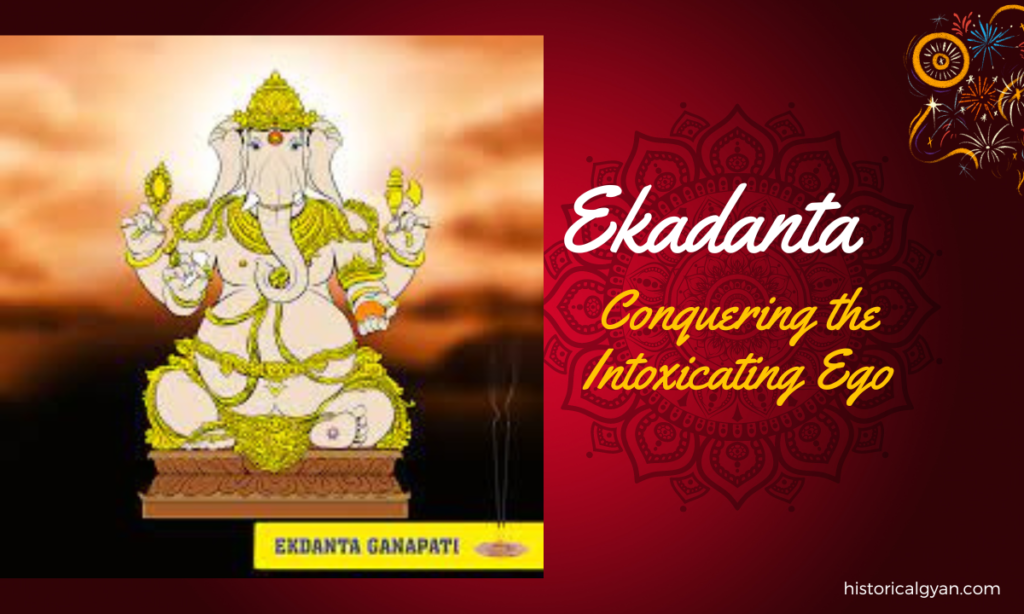
Ekadanta, the second avatar, reveals the dangers of intoxication and unchecked pride. Mada, the son of Asura Chavana, was consumed by alcohol and harbored ambitions of ruling the world. His uncle Sukracharya, the guru of the Asuras, bestowed upon him the “hrim” mantra. Drunk with newfound power, Mada embarked on a conquest, sowing chaos among the gods.
In their hour of need, the gods summoned Ekadanta. Confronted by the formidable deity, Mada’s courage crumbled, leading to his surrender. This avatar serves as a stark reminder that intoxication can inflate one’s ego to catastrophic levels, ultimately resulting in self-destruction.
Mahodara: The Duality of Delusion
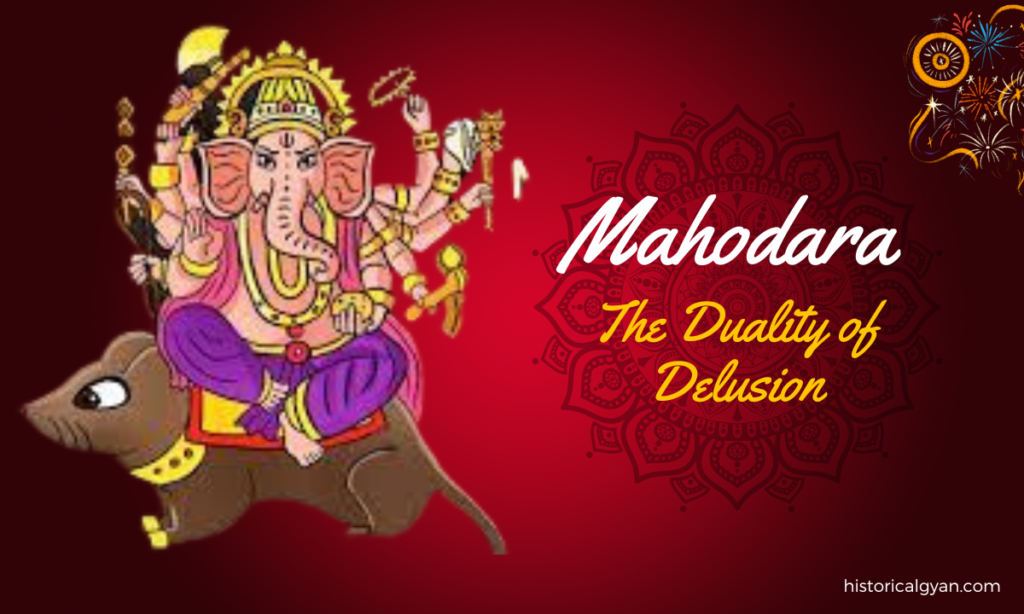
The intriguing avatar of Mahodara has two versions. In one, we encounter Mohasura, the embodiment of delusion, who gained prominence due to his devotion to Surya, the sun god. In the other version, Shiva’s meditation was disrupted by Parvati, giving birth to Mohasura, who unleashed chaos upon the world.
Desperate, the gods turned to Mahodara for salvation. Vishnu appeared, advising Mohasura to surrender, which he did, becoming a devout follower of Mahodara. Regardless of the version, Mahodara’s message remains clear – delusion and ego can lead to catastrophic consequences.
Gajanana: The Triumph Over Lust
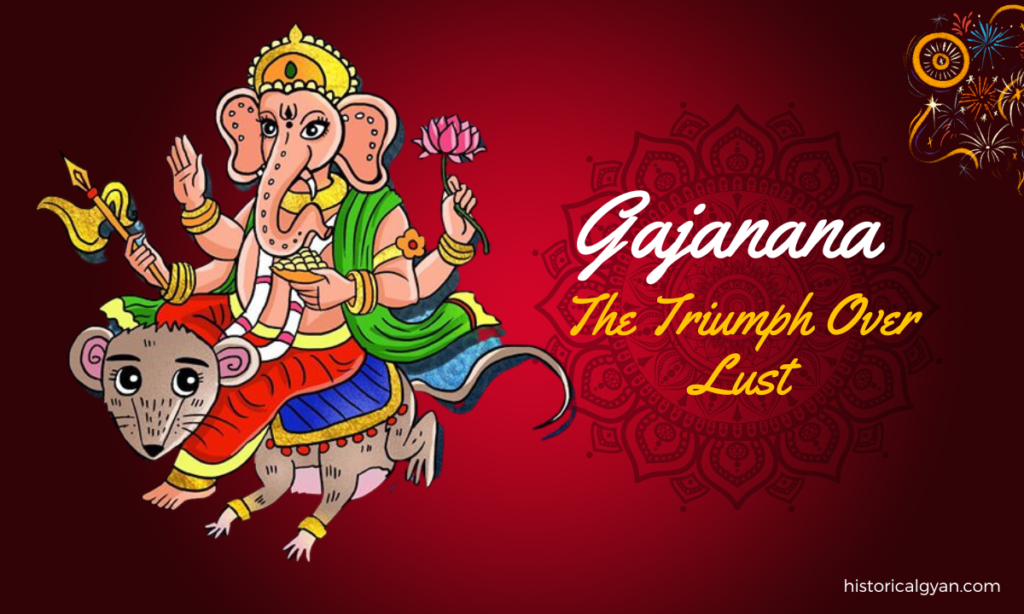
Gajanana’s tale revolves around Kubera, the heavenly treasurer, who cast a lecherous gaze upon Goddess Parvati, enraging her. This wrathful energy materialized as Lobhasura, who, after rigorous penance under Sukracharya’s guidance, sought to conquer the three realms.
Seeking guidance, the gods invoked Gajanana. In the presence of Gajanana, Lobhasura was overwhelmed by guilt, ultimately begging for forgiveness. This avatar emphasizes that lust, self-indulgence, and self-centeredness unknowingly pave the path to the destruction of one’s soul.
Lambodara: Subduing the Ego’s Wrath
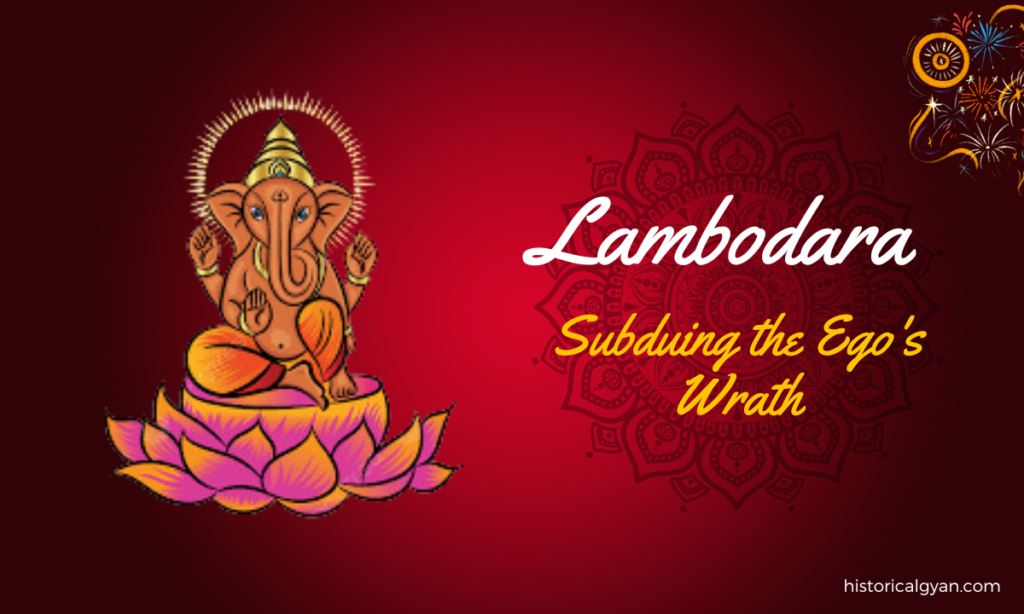
The celestial churning of the ocean brought forth Vishnu in the guise of Mohini, enchanting even Shiva. When Shiva’s enchantment was exposed, it gave birth to Krodhasura, a demon fueled by anger.
To halt Krodhasura’s rampage, Ganesha assumed the form of Lambodara, sporting a potbelly vast enough to contain the demon’s fury. Lambodara’s intervention restored peace, underscoring the destructive potential of unchecked anger.
Vikata: Desire’s Unquenchable Flames
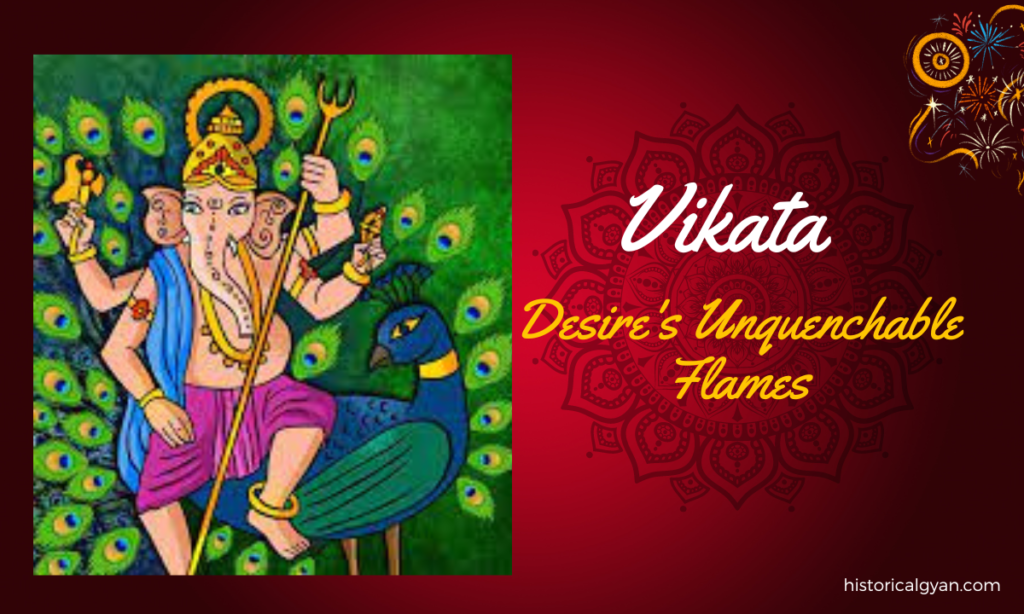
Kamasura, born of Vishnu and Vrinda, epitomized trickery, lust, and the consequences of desire. Seeking power, he performed severe penance and meditation on Shiva, eventually conquering the three worlds. Sage Mudgulla advised the gods to chant “om” in Mayuresa Kshetra, summoning Ganesha in the form of Vikata atop a peacock. Vikata’s victory over Kamasura teaches that desire knows no bounds and that genuine satisfaction and happiness come from within.
Vighnaraja: Dissolving Worldly Attachments
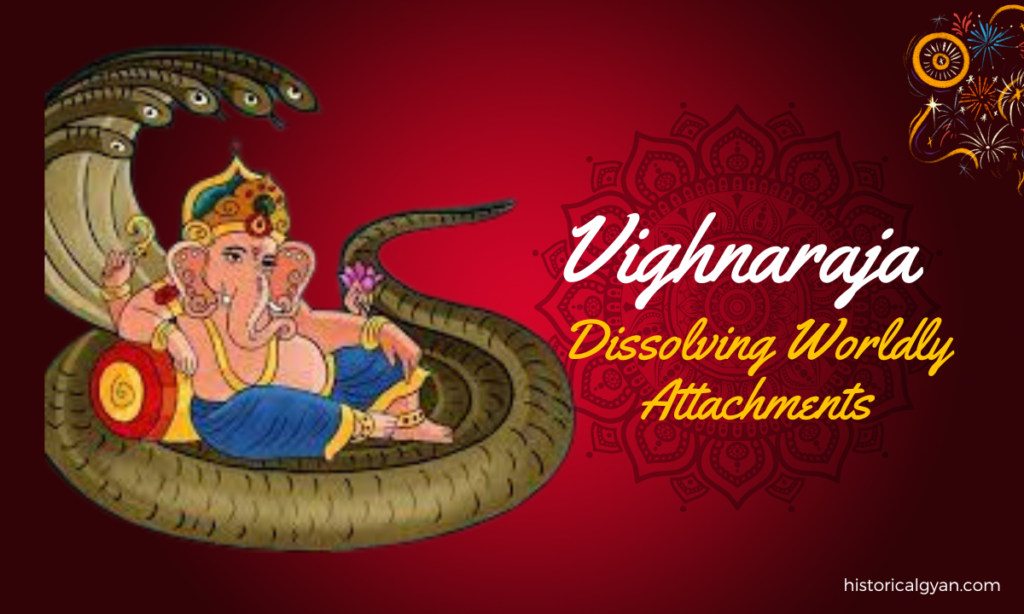
Vighnaraja’s narrative commences with Goddess Parvati’s creation of a boy, Mamh, who succumbs to worldly attachments, transforming into the demon Mamasura. Banished from Swargalok, Mamasura’s reign of terror prompted the gods to seek Ganesha’s aid. Ganesha, in the form of Vighnaraja, mounted on the serpent Sheishnag, subdued the demon of attachment, restoring peace.
Vighnaraja’s presence serves as a powerful reminder that worldly attachments offer no true pleasure; the soul’s quest lies in truth and divinity, transcending all illusions.
Dhumravarna: The Demise of Ego
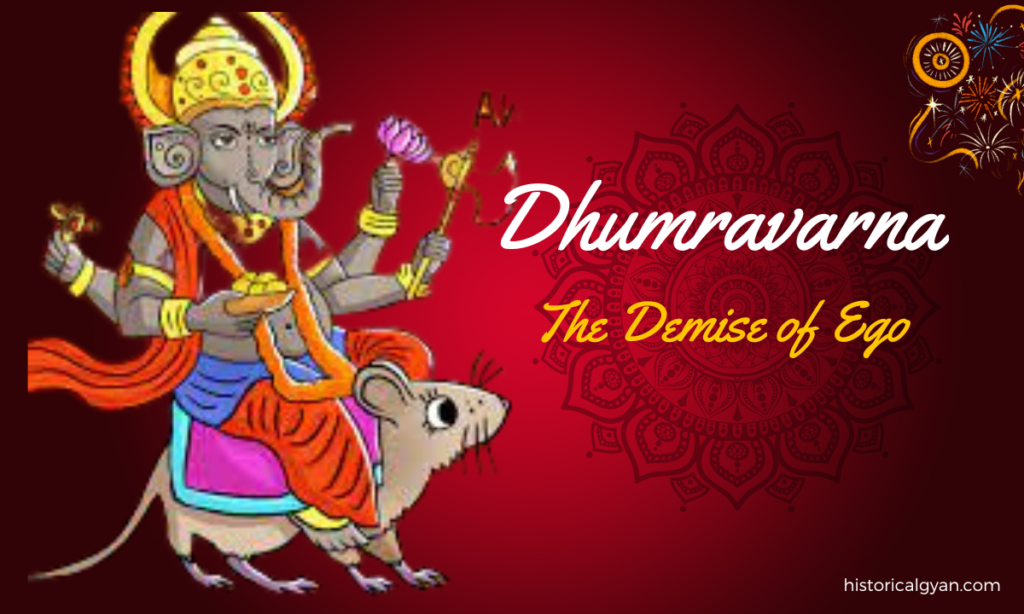
The final avatar of Lord Ganesha, Dhumravarna, unfolds as a lesson on the perils of ego. Surya’s arrogance led to the creation of Ahamkarasura, a demon of immense power. Desperate, the gods beseeched Ganesha for aid. Ganesha, assuming the form of Dhumravarna, arrived on a mouse and vanquished the proud demon.
Dhumravarna’s story serves as a stark reminder that ego, often the root cause of self-destruction, can lead to one’s downfall.
In conclusion,
The revelation of Eight Avatars Of Lord Ganesha unveils profound lessons that transcend the boundaries of time and culture. These avatars are not mere mythological tales but mirrors that reflect the human condition, urging us to introspect and evolve. When we immerse Lord Ganesha’s likeness in the sea during Ganesh Chaturthi,
we symbolically release our negative traits, be it pride, arrogance, desire, delusion, greed, anger, jealousy, or self-love. May Lord Ganesha’s benevolence guide us towards a path of inner transformation and spiritual enlightenment.
you can also click here
Lord Kalki: The Tenth Avatar Of Lord Vishnu
